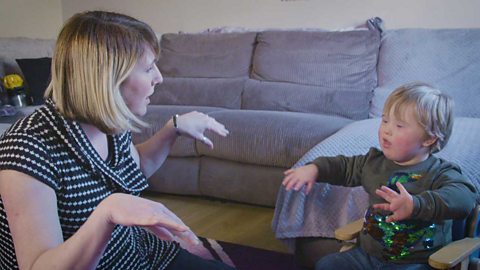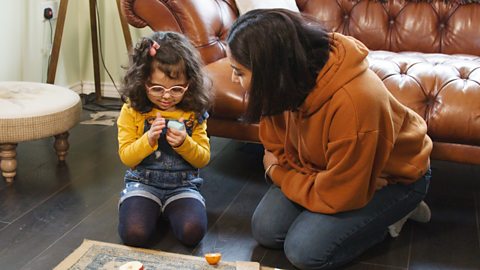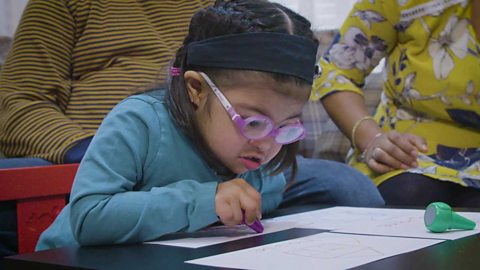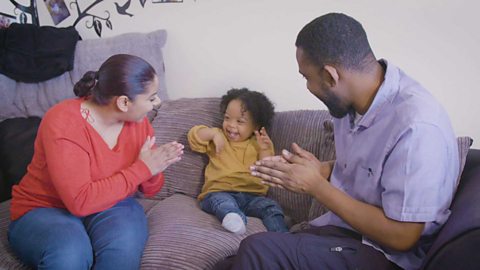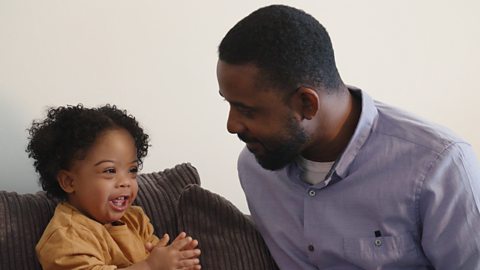Alys Mathers is a Highly Specialist Speech and Language Therapist and works with children who have a wide range of speech, language and communication needs.
Here she talks about how understanding all the ways we communicate is especially important if your child has additional needs
As adults, weÔÇÖre tuned into body language and other subtle gestures. A raised eyebrow, crossed arms or an unhappy face can speak louder than your voice: communication is so much more than words.
Babies and children communicate in lots of different ways too, both before they learn their first words and once they start talking. And you are the best person to pick up on all these ways your child is ÔÇÿchattingÔÇÖ.
Some children with additional needs can take a bit longer to develop their communication skills, or may learn to communicate with you in different ways.
But being aware of all their forms of communication, including looks, movements and sounds, helps you celebrate every stage of your childÔÇÖs communication journey.
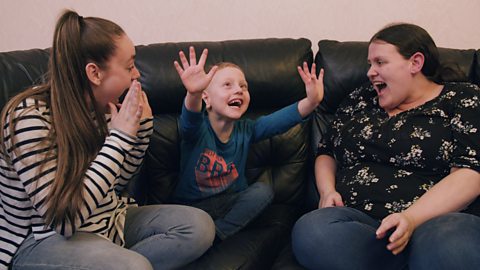
First signs of communication
A long time before they learn words, babies and children may chat with you by
- looking at you
- making noises
- smiling and other simple facial expressions, like making shapes with their mouth or blinking
- making movements ÔÇô even if they donÔÇÖt yet have full control over their arms and legs
- looking at what they want or like
And there are lots of ways you can 'chat' back to them.
- Get down close to your child. Babies need time for their eyesight to develop, and some children may have visual impairments, so make it as easy as possible for them to see your face when talking and playing.
- Wait for your baby or child to make a noise, gesture or facial expression, then copy it. This is the beginnings of taking turns, useful for play and conversations.
- Play with sounds, for example copying ÔÇÿbabbleÔÇÖ or blowing raspberries. This encourages your child to play with sounds too.
- Sing songs and nursery rhymes together, pausing and waiting for older babies or children to show with a smile, laugh, bounce or sound that they want you to keep going.
- Exaggerate your facial expressions and gestures to make these really clear when you're talking and playing together.
- Use simple signs, like baby signing or Makaton. DonÔÇÖt worry about being a perfect signer straight away, learn a few simple signs that your child might need a lot (like milk or teddy) and start with these.
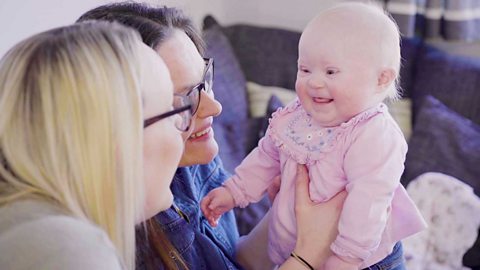
Early stages of talking
When they're learning their first words, which may not always be clear, your child will get their message across in a variety of ways. These include:
- Taking you to what they want.
- Holding up a toy or object to show you.
- Giving you things, for example handing you a tub or pot may mean they want you to open it.
- Using actions, for example when singing nursery rhymes with you. This could include clapping along, a way of showing theyÔÇÖre having fun. These actions can build into learning a sign language if thatÔÇÖs what your child finds helpful, such as Makaton.
- Pointing at things, which we all sometimes do to show what we're talking about. Some children will need to point to pictures to get their message across for a bit longer if they are finding spoken language hard to learn.
- Crying, shouting and screaming. ÔÇÿBad behaviourÔÇÖ is a way of sending you a message, even if you donÔÇÖt want it. Find out what message they are trying to share and help them show this in a better way, for example by pointing or signing.
And there's plenty you can do to help your child understand and talk
- Respond when they point, show you or give you something, so they know their message has been understood. You can say the words (or use the signs) for what they might say if they could. DonÔÇÖt pretend you donÔÇÖt understand when you do.
- Link new words with actions or Makaton signs. Using signs and actions helps children learn language, and wonÔÇÖt stop them learning to talk.
- Use objects and pictures on flash cards ÔÇô show instead of just tell, for example hold up their nappy if you need to change it and they wonÔÇÖt stop playing.
- Explain what theyÔÇÖre trying to say to someone who might not understand them. There will be times when you know what they want, but other people donÔÇÖt. For example, if your child is pointing to the window and saying ÔÇÿwooÔÇÖ, you might say to your friend ÔÇÿheÔÇÖs telling you he saw a dog out of the windowÔÇÖ, then say to your child ÔÇÿyes, woof woof! A dog. We saw a dog!ÔÇÖ This helps your child talk with more people, encourages them to keep trying, and also shows them the word your friend understands.
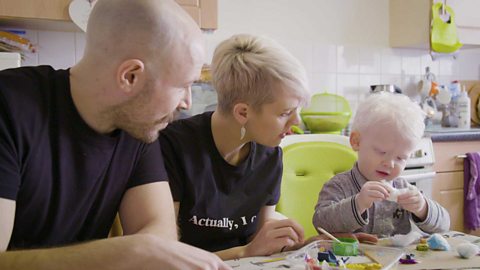
Budding chatters
Even when words and short sentences are used, children still use their bodies, actions, and gestures to communicate alongside words, so itÔÇÖs still important to notice and understand all these cues.
We all use these ÔÇô especially when weÔÇÖre feeling strong emotions, for example if weÔÇÖre feeling sad, angry or worried. There are some easy ways you can help your child understand and join in with sentences and conversations:
- Give your child plenty of time to think of what they want to say ÔÇô try not to rush them.
- Go with the method of communication your child naturally uses. DonÔÇÖt assume theyÔÇÖre being stubborn or lazy if they find it easier to point or sign, or canÔÇÖt always explain using words.
- Keep your sentences short and simple, and be patient if your child doesnÔÇÖt understand straight away. Even if your child is chatting away with full sentences, donÔÇÖt assume they always understand yours. Many children develop an understanding of their routines by picking up on your actions first, so when you stand by the door holding their shoes, they donÔÇÖt need to understand any of your words to know itÔÇÖs time to go out.

